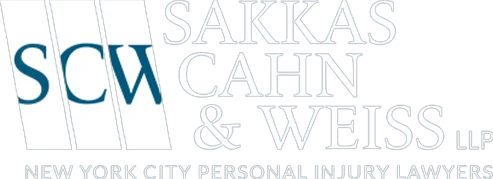Understanding Damages in a New York Personal Injury Case

If you’ve paid attention to personal injury awards in the news, you might be confused about what to expect in your personal injury case. Many clients come to us either unsure of what to expect or saddled with a host of unrealistic expectations forged from seeing multi-million dollar headlines.
Personal injury cases can run the gamut. Some cases aren’t worth much more than the $50,000 minimum damages threshold you must meet to launch a lawsuit. Other cases truly are worth several million dollars. Which will be true in your case? How do lawyers, judges, and juries decide?
Here’s everything you need to know.
The Purpose of a Personal Injury Case
table contents
- The Purpose of a Personal Injury Case
- Economic Damages
- Non-Economic Damages
- Punitive Damages
- Settlements vs. Verdicts
- The Role of Appeals
- The Role of Insurance Policy Limits
- Get Help Today
A personal injury case exists to make a victim “whole” after another party’s negligence has injured them. In legal theory, to make someone whole means to return them to the position they would have been in had the injury or loss never occurred.
Of course, if you’ve suffered from a catastrophic injury such as a spinal injury that robs you of your ability to walk or a TBI that leaves you in chronic pain, it may be impossible to put you back together again as you were.
While the law cannot restore your body, it can restore your economic position to you to the best of its ability.
This is why you can sometimes receive damages for loss of earning capacity or future medical care. Before the accident, you could have supported yourself through work. If you can’t do that after the accident, receiving compensation for those losses is part of making you as whole as the law can make you.
Tort reformers, pundits, and news sources sometimes like to pretend that people only press personal injury lawsuits to “get rich.” In reality, very few people get rich off of a personal injury lawsuit. Most of that money goes to medical bills. At best, the money also allows personal injury victims to maintain whatever lifestyle they had before the accident.
Economic Damages
Economic damages cover the exact dollar amount lost to the accident. They include:
- Your medical bills.
- Wages lost while recovering from the accident.
- Additional expenses incurred due to the accident, such as purchasing housekeeping help.
- If applicable, loss of earning capacity damages.
- If applicable, future medical care damages.
In most personal injury cases, loss of earning capacity and future medical care damages aren’t applicable. Most people recover and return to work without needing either of these things. Those are very straightforward cases.
Loss of earning capacity and future medical expenses are negotiable estimates. Nobody can predict the future. Certain experts can help provide evidence for the estimates offered by either side during negotiations. Nevertheless, these amounts are variable and may not reflect your future expenses. As personal injury attorneys, we try to push these amounts as high as possible whenever they apply to your case.
>Non-Economic Damages
Non-economic damages are also known as “pain and suffering” damages. The law recognizes that injuries come with pain, discomfort, anguish, inconvenience, and emotional trauma that you would not have had to deal with had you never been injured in the accident.
Pain and suffering are subjective, so when people fling vitriol at personal injury cases, they tend to fling it here. Tort reformers and insurance industry shills would like you to believe that most people exaggerate their pain and suffering to get more money.
Pain and suffering damages are often set on far more objective factors than “how bad does it hurt?” We look at the degree of changes that have happened in a person’s life and the degree of difficulty they are going through to set a multiplier. The non-economic damages are calculated by taking the economic damages, multiplying them by the multiplier, and coming up with a figure.
So if you have $100,000 in economic damages, and your multiplier is 2, then you get $200,000 in pain and suffering for a total settlement of $300,000.
There is no chart or guideline for setting the multiplier. The lowest it goes is 1, and the highest it goes is 5. We try to negotiate the multiplier higher; defense lawyers try to negotiate it lower.
Punitive Damages
Punitive damages are rare. In New York, you can only recover punitive damages when the person who caused your injuries was malicious, egregious, or willfully indifferent in their negligence. This is a difficult standard to meet.
Punitive damages are used to deter the same behavior in the future and are used to send a message. You might see them more often in cases where you are going up against a larger corporation.
Nevertheless, a drunk driver might be (but won’t necessarily) on the line for punitive damages, as would someone who is texting while driving.
Settlements vs. Verdicts
A settlement occurs when both sides come to an agreement about the damages that should be paid out.
A verdict occurs when a settlement can’t happen for whatever reason, and the matter goes to trial. If the plaintiff prevails, the jury then awards an amount that seems reasonable to them.
Sometimes, this amount is far higher than what would be awarded in a settlement. Sometimes, it’s far lower. Sometimes, plaintiffs aren’t successful at trial and walk away with nothing. Because they are more predictable, settlements are usually preferable.
The Role of Appeals
Either side gets one chance to appeal, though the appeal may move through multiple courts. In most New York injury cases, the appeal may move to the New York Court of Appeals and then to the New York Supreme Court before it stops.
Appeals may only raise legal issues. They may not introduce new evidence. Appeals are only applicable in jury trials. Often, but not always, a judge will reduce the jury award given at trial if the defendant is successful in the appeal.
The Role of Insurance Policy Limits
While there are no caps on personal injury payouts in New York, insurance companies are the entity that pays out most personal injury claims. In your standard car accident case, the driver doesn’t have the means to pay anything.
Insurance only pays up to the insured’s policy limits. This is why it’s so important to have Uninsured/Underinsured motorist coverage, so that your own policy may make up the difference.
Insurance policy limits don’t matter as much if you’re suing a major corporation. Corporate policies have high limits; even when they don’t, corporations typically have sufficient assets to pay out the difference.
Get Help Today
We work hard to help our clients get every penny of the damages due to them.
If you’ve been injured in an accident and need help, don’t hesitate to contact our office today.
See also:
The Importance of Hiring a Personal Injury Lawyer in NYC
Tips for Documenting Injuries During Your Personal Injury Case
Get A Free Case Review
Fields marked with an * are required
"*" indicates required fields
110 East 42nd Street
Suite 1508
New York, NY 10017
Phone: 212-571-7171
Fax: 212-571-7174
1461 Franklin Ave, Suite 2SE
Garden City, NY 11530
Phone: 516-747-7472
Fax: 212-571-7174

